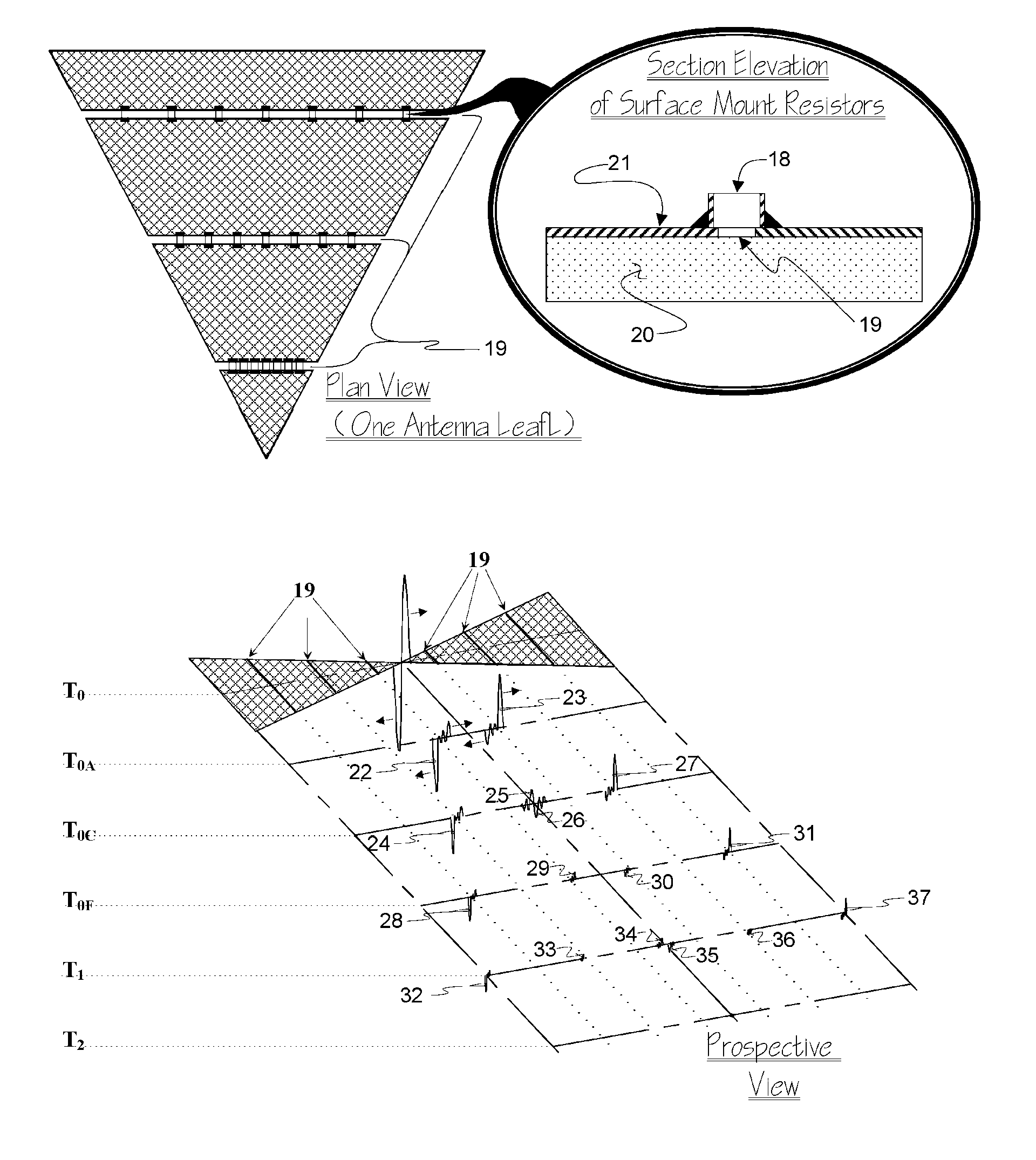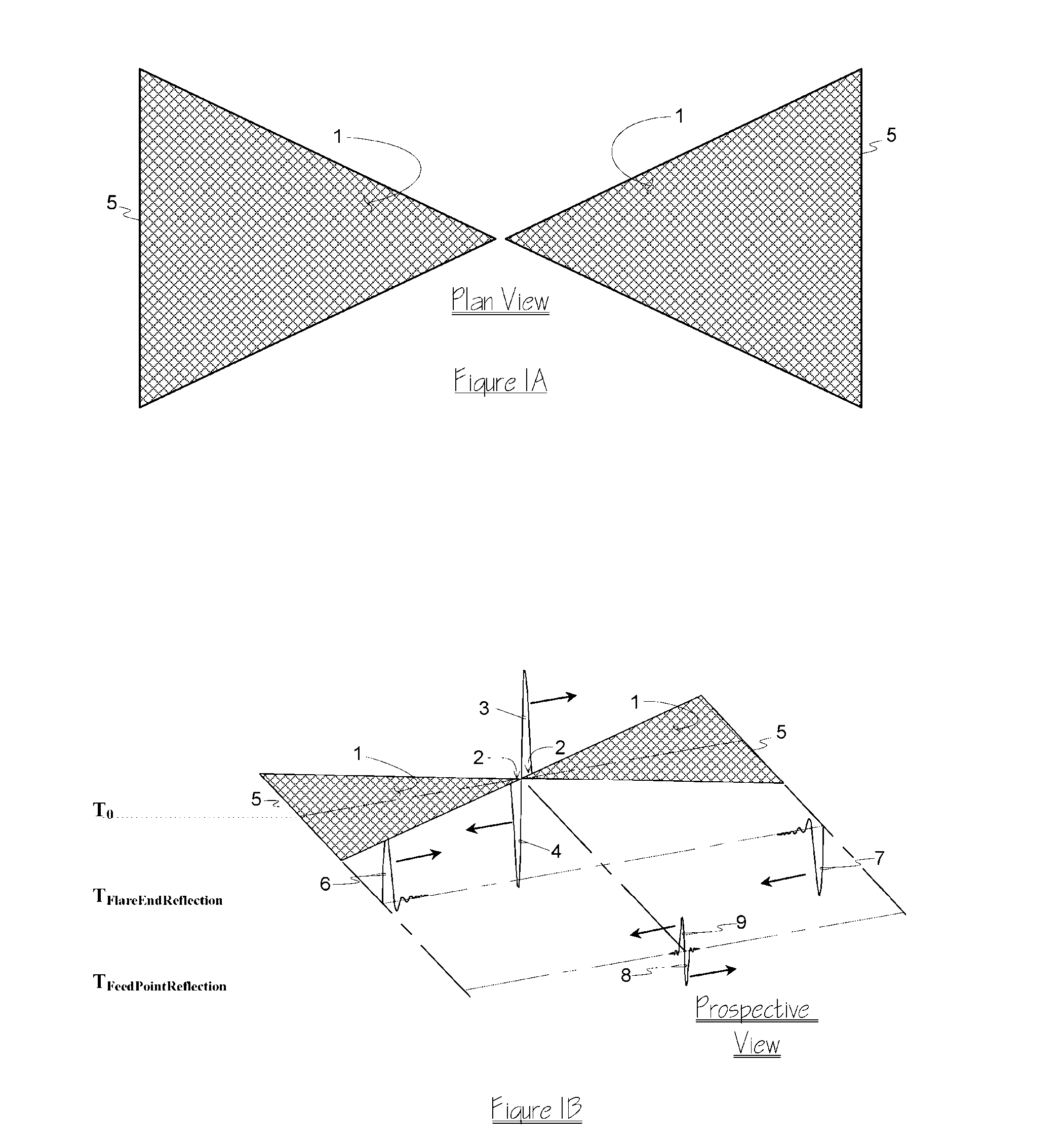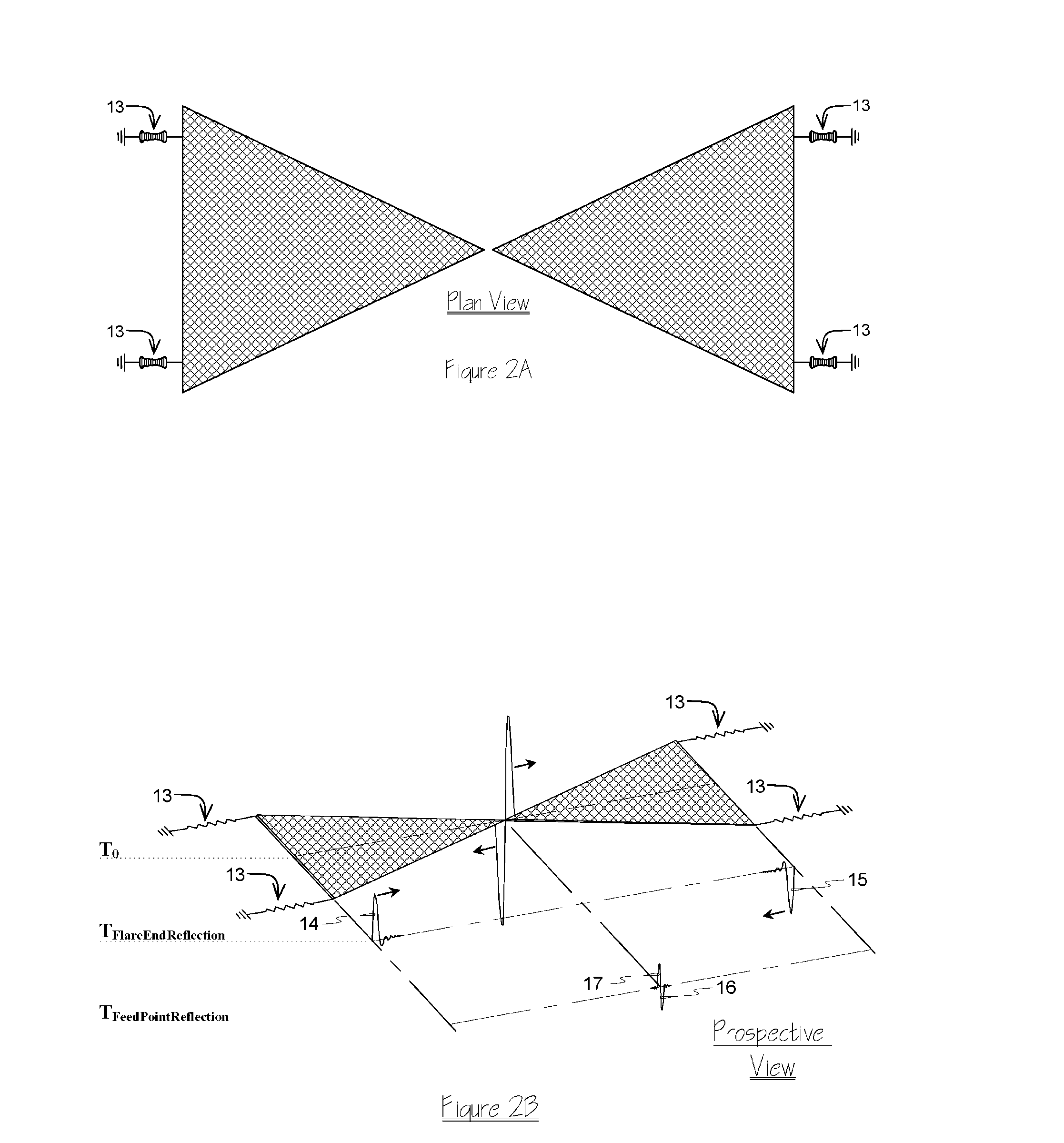Optimal Tapered Band Positioning to Mitigate Flare-End Ringing of Broadband Antennas
a broadband antenna and tapered band technology, applied in the direction of antennas, electrical equipment, antenna feed intermediates, etc., can solve the problems of reducing the radiation efficiency of lower signal frequency components, and achieve the effects of reducing radiation efficiency, reducing interference, and improving the impedance characteristics and filter response of antennas
- Summary
- Abstract
- Description
- Claims
- Application Information
AI Technical Summary
Benefits of technology
Problems solved by technology
Method used
Image
Examples
Embodiment Construction
[0033] This invention is related to the improvement of antennas that are capable of transmitting an impulse signal by providing a method that balances radiation efficiency, end-fire ringing, and impulse distortion to improve the wide band impedance characteristics and wave reflections on the surface of an antenna. This novel approach was first published in [11] with an improvement to [10] that included removal of the first two impedance tapered bands. The position of each tapered impedance interface in [11], including the position of the first two bands that were removed from the antenna, was based on traditional and widely published mathematical calculations on the subject [9]. This invention discloses a novel improvement to [10] and [11] that optimally positions the first interface, most often in the half of the antenna that is closest to the flare-end, to eliminate the occurrence of interference from the interface induced pulse reflection before the front edge of the feed point i...
PUM
 Login to View More
Login to View More Abstract
Description
Claims
Application Information
 Login to View More
Login to View More - R&D
- Intellectual Property
- Life Sciences
- Materials
- Tech Scout
- Unparalleled Data Quality
- Higher Quality Content
- 60% Fewer Hallucinations
Browse by: Latest US Patents, China's latest patents, Technical Efficacy Thesaurus, Application Domain, Technology Topic, Popular Technical Reports.
© 2025 PatSnap. All rights reserved.Legal|Privacy policy|Modern Slavery Act Transparency Statement|Sitemap|About US| Contact US: help@patsnap.com



